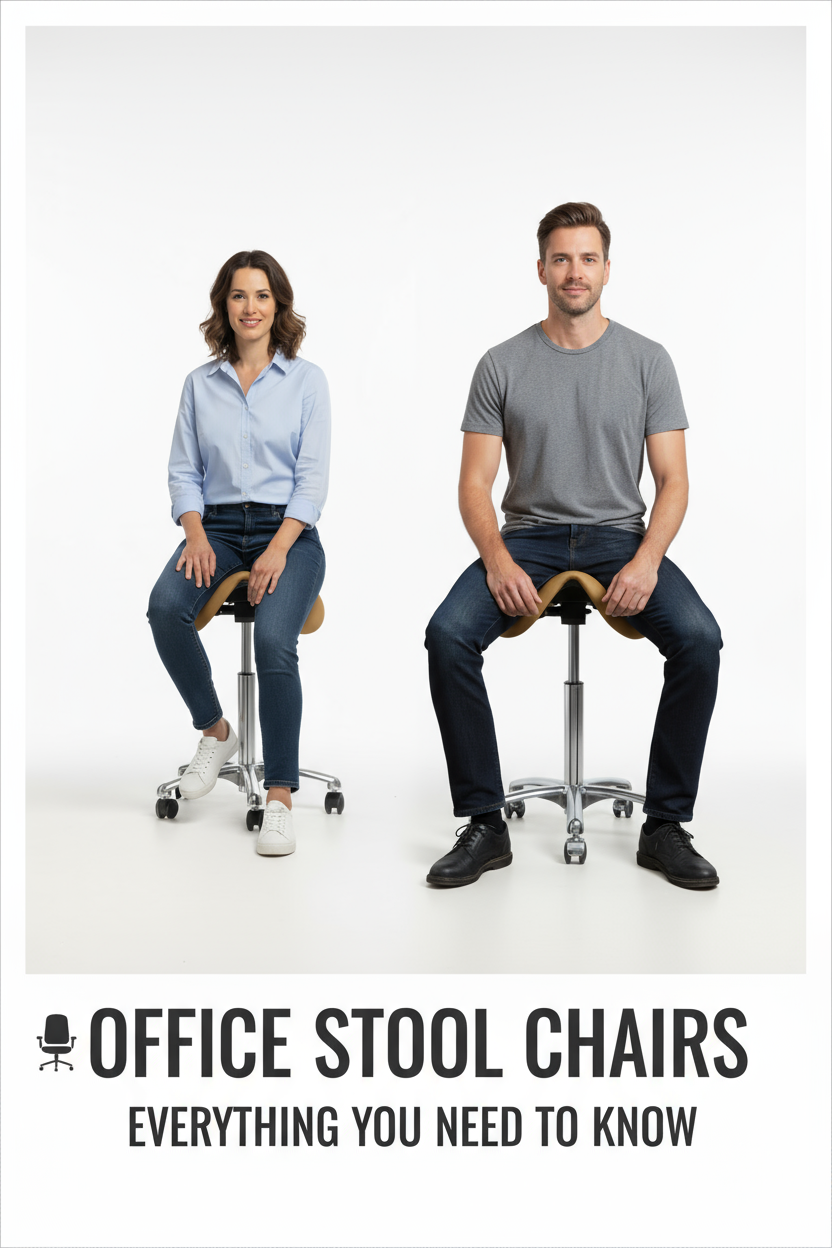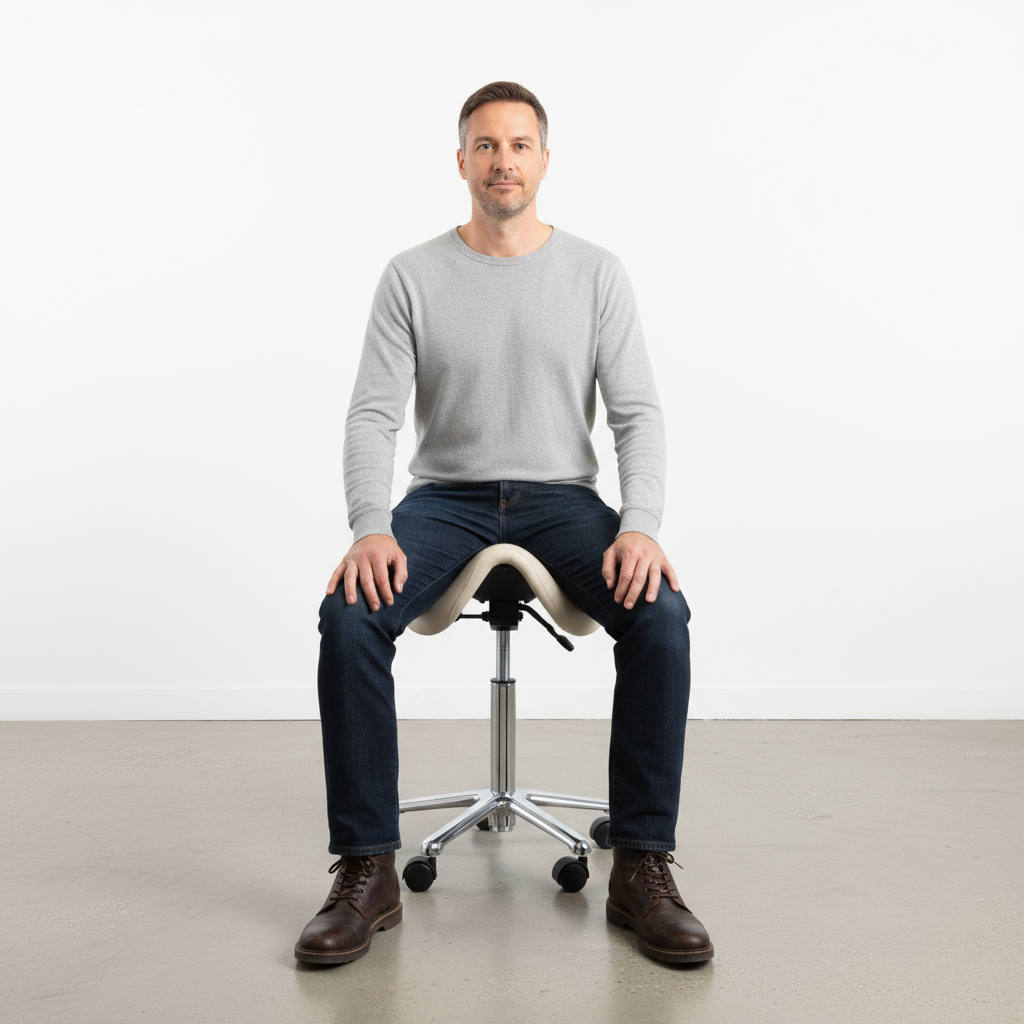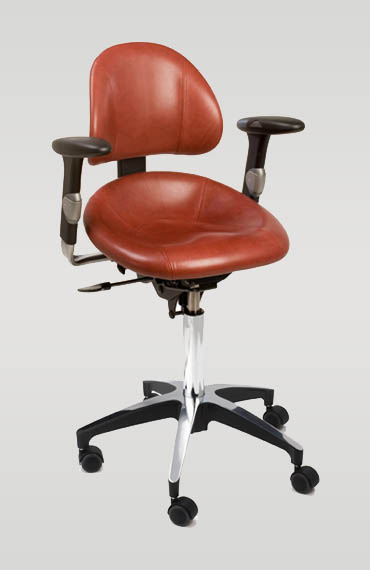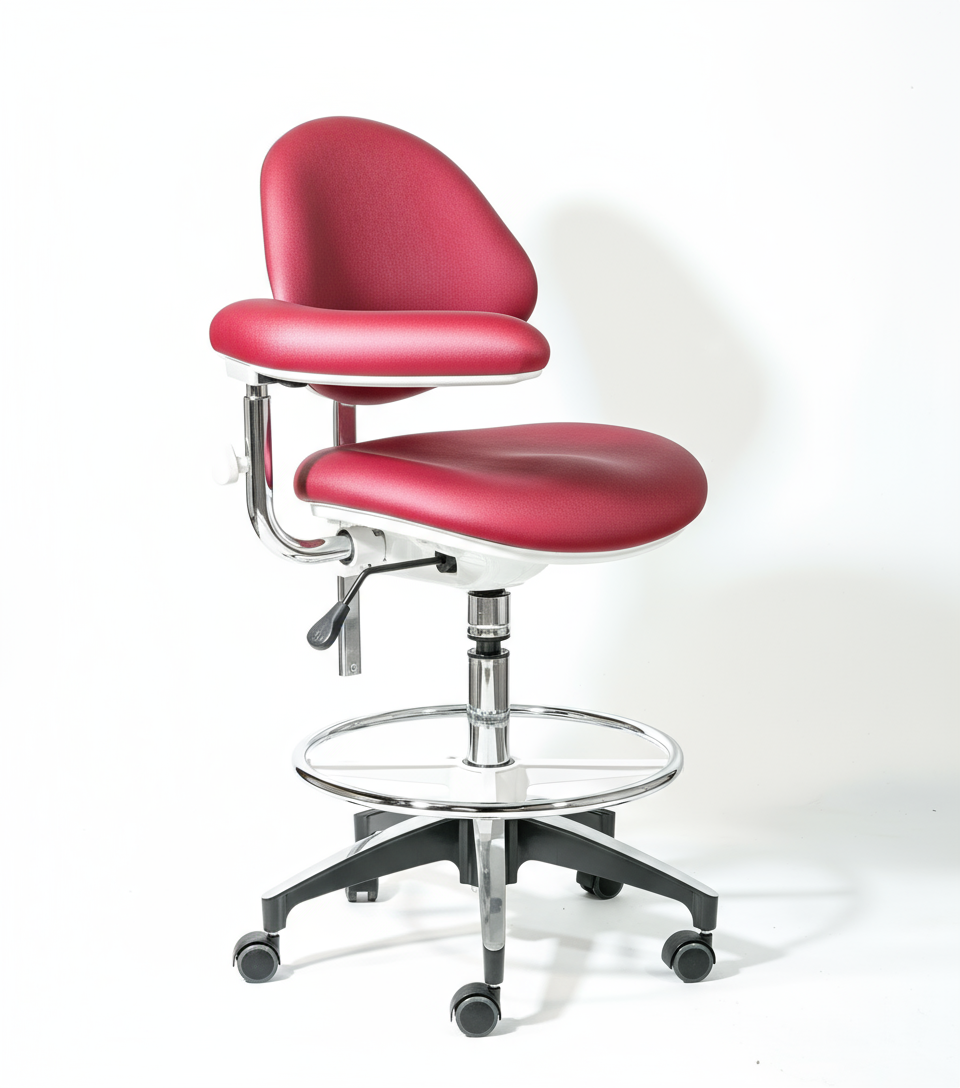Share
The Ultimate Guide to Saddle Office Chairs: Everything You Need to Know
Your complete resource for understanding, choosing, and using saddle office chairs
Quick Navigation: This comprehensive guide covers everything from basic saddle chair benefits to advanced selection criteria. Whether you're new to saddle seating or looking to upgrade your current setup, you'll find actionable information to make the best choice for your workspace and health.
What Are Saddle Office Chairs?
Saddle office chairs are ergonomic seating solutions designed to mimic the positioning and benefits of horseback riding. Unlike traditional office chairs that encourage a 90-degree hip angle, saddle chairs feature a distinctive seat shape that positions your legs in a wide, open stance while tilting your pelvis slightly forward.
This unique design creates an open hip angle of 110-135 degrees, which maintains the natural curves of your spine, engages your core muscles, and promotes active sitting throughout your workday.
Key Design Features
- Split or contoured seat design that accommodates natural leg positioning
- Forward-tilted seat angle (typically 15-30 degrees)
- Height-adjustable to accommodate various desk heights and user preferences
- Usually backless design to encourage active core engagement
- Sturdy base with smooth-rolling casters for mobility
The Science-Backed Benefits of Saddle Office Chairs
Research from occupational health specialists and ergonomic experts has identified numerous advantages of saddle chair seating over traditional office chairs:
Improved Posture and Spinal Alignment
The forward pelvic tilt naturally achieved on saddle chairs maintains your spine's natural S-curve without requiring external back support. This positioning reduces pressure on spinal discs and helps prevent the forward head posture common in traditional office workers.
Reduced Hip Flexor Tightness
Traditional office chairs keep your hip flexors in a shortened position for hours, leading to tightness and pain. Saddle chairs maintain these crucial muscles in a lengthened position, preventing the hip flexor syndrome that affects millions of desk workers.
Enhanced Core Strength
Without passive back support, your deep abdominal and back muscles must work continuously to maintain posture. This gentle, constant engagement strengthens your core over time, creating your body's natural support system.
Improved Circulation
The open leg position eliminates pressure on the posterior thigh, promoting better blood flow throughout your lower body. This reduces leg swelling, varicose vein risk, and the "dead leg" feeling common after long sitting sessions.
Types of Saddle Office Chairs
Not all saddle office chairs are created equal. Understanding the different styles available helps you choose the best option for your specific needs:
Traditional Saddle Chairs
Best for: General office work, customer service, administrative tasks
These feature a unified saddle-shaped seat with a gentle split or contour. They offer the classic benefits of saddle seating while being the most approachable option for first-time users.
Split-Seat Saddle Chairs
Best for: Users with specific comfort needs, longer sitting periods
These feature two distinct seat sections that provide maximum freedom of movement and air circulation. Popular among healthcare professionals and creative workers who need to frequently shift positions.
Saddle Chairs with Back Support
Best for: Transition from traditional chairs, users with existing back issues
These combine saddle seat benefits with minimal back support for users who aren't ready for fully active sitting. They offer a bridge between traditional and saddle seating.
Professional-Grade Saddle Chairs
Best for: Healthcare professionals, precision work, extended use
These feature premium materials, advanced adjustability, and specialized designs for demanding professional environments. Often include features like antimicrobial surfaces and enhanced durability.
How to Choose the Best Saddle Chair for Your Needs
Selecting the right saddle office chair depends on several key factors. Use this decision framework to find your perfect match:
Consider Your Primary Work Activities
- Computer work: Traditional saddle chair with full range of height adjustment
- Creative work: Split-seat design for maximum movement freedom
- Customer interaction: Saddle chair with back support for professional appearance
- Precision tasks: Professional-grade chair with stability features
Evaluate Your Physical Considerations
- Height: Ensure the chair's adjustment range accommodates your desk height
- Hip flexibility: Those with limited mobility may prefer chairs with back support
- Core strength: Beginners should start with shorter usage periods
- Existing pain: Specific designs target back pain, hip pain, or circulation issues
Proper Setup and Adjustment
Getting the most benefit from your saddle office chair requires proper setup. Follow these guidelines for optimal positioning:
Height Adjustment Guidelines
- Your thighs should slope downward at a 15-30 degree angle
- Your feet should rest comfortably on the floor or footrest
- Your elbows should be at approximately 90 degrees when typing
- You should feel a gentle stretch in your hip flexors (this is normal and beneficial)
Positioning Tips
- Sit toward the front of the seat for maximum benefit
- Allow your legs to fall naturally to either side
- Keep your shoulders relaxed and avoid hunching forward
- Maintain contact with the floor for stability and circulation
Transitioning to Saddle Office Chairs
Making the switch from traditional office chairs requires patience and gradual adaptation. Here's your transition roadmap:
Week 1-2: Getting Started
Begin with 30-60 minute sessions, alternating with your regular chair. Focus on proper positioning rather than duration. Some initial core muscle fatigue is normal and indicates your stabilizing muscles are activating.
Week 3-4: Building Tolerance
Gradually increase usage to 2-3 hour periods. You should notice improved posture awareness and reduced stiffness when standing. Hip flexor tightness should begin to decrease.
Month 2+: Full Integration
Most users can comfortably use their saddle chair for full workdays by this point. Benefits typically include reduced back pain, improved energy levels, and better overall posture throughout the day.
Common Concerns and FAQ
Q: Are saddle chairs comfortable for all-day use?
A: Yes, but comfort is redefined. Instead of passive comfort, saddle chairs provide active comfort that improves over time as your core strength increases and your body adapts to healthier positioning.
Q: Will a saddle chair help with my existing back pain?
A: Many users experience significant back pain reduction, particularly for lower back pain caused by poor posture. However, consult with a healthcare provider for persistent or severe pain.
Q: How do I know if I'm sitting correctly?
A: Correct positioning feels like a gentle, controlled stretch. You should feel engaged but not strained, with your spine naturally upright and your core gently active.
Investment Considerations: Cost vs. Value
Quality saddle office chairs represent a significant investment in your long-term health and productivity. Here's how to evaluate the true value:
Immediate Benefits
- Improved posture and reduced pain within weeks
- Increased energy and focus during work
- Enhanced core strength and stability
- Better circulation and reduced stiffness
Long-term Value
- Potential reduction in healthcare costs related to postural problems
- Decreased risk of chronic musculoskeletal disorders
- Improved long-term spinal health and mobility
- Professional-grade chairs often last 10+ years with proper care
Why Saddle Office Chairs Are Superior to Traditional Seating
The evidence is clear: saddle office chairs address the fundamental problems that traditional office chairs create rather than just managing symptoms:
| Feature | Traditional Chair | Saddle Chair |
|---|---|---|
| Hip Angle | 90° (creates tightness) | 110-135° (promotes flexibility) |
| Core Engagement | Passive (weakening) | Active (strengthening) |
| Spinal Position | C-curve (harmful) | Natural S-curve (healthy) |
| Movement | Restricted | Encouraged |
Making Your Decision
Choosing a saddle office chair is ultimately an investment in your long-term health, productivity, and comfort. The transition requires commitment and patience, but the benefits—reduced pain, improved posture, increased energy, and better overall health—make it one of the most impactful changes you can make to your workspace.
Ready to transform your workspace and your health? A quality saddle office chair isn't just seating—it's a tool for better living, one workday at a time.
The science is clear, the benefits are proven, and the time to make a change is now. Your future self—pain-free, energized, and strong—will thank you for making this investment in your health.
Remember: The best ergonomic chair isn't the one with the most features or the highest price tag—it's the one that encourages your body to function the way it was designed to function. Saddle office chairs represent the perfect fusion of ancient wisdom and modern engineering, creating seating solutions that work with your body rather than against it.




